New York City: Landmarks and Culture Unveiled
Embark on a captivating journey through New York City’s iconic landmarks and cultural treasures on this free walking tour.
Time
3 Hours
Stops
9 Places
Distance
4.7 km
Times Square
Known as "The Crossroads of the World," Times Square is an iconic symbol of New York City's vibrant culture and bustling energy.
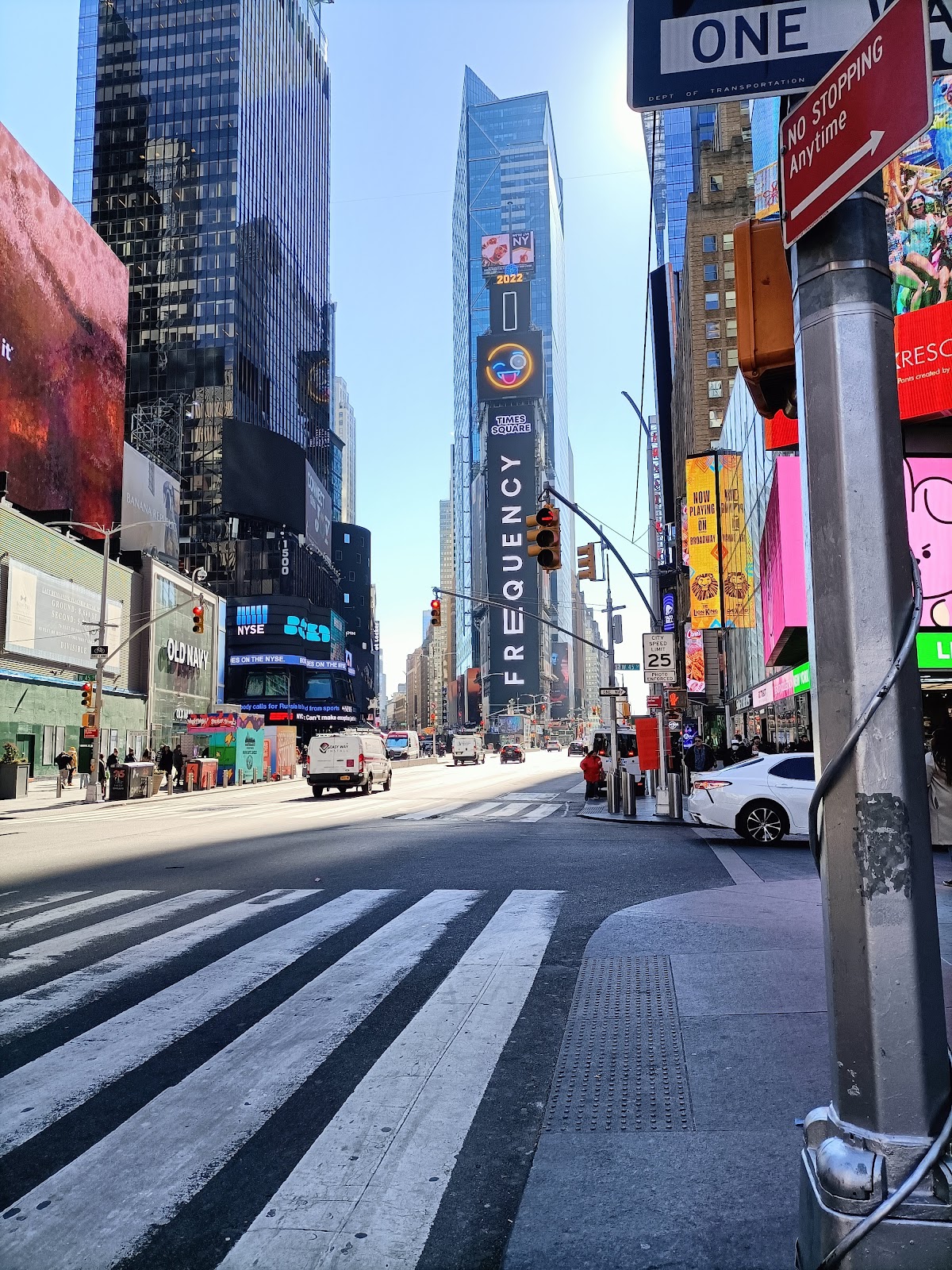
Times Square (Source: Google Maps)
Known as "The Crossroads of the World," Times Square is a bustling hub of activity that epitomizes the spirit of New York City. Renowned for its bright lights, massive digital billboards, and diverse crowds, it attracts millions of visitors each year. Originally named Longacre Square, it was renamed in 1904 after The New York Times moved its headquarters to the area. The square has been a focal point for cultural events, including the annual New Year's Eve ball drop, which has become a global tradition. Times Square is also home to numerous theaters, shops, and restaurants, making it a vibrant center of entertainment and commerce. Its eclectic atmosphere and cultural significance make it an essential stop for anyone exploring the city.
Radio City Music Hall
Located near MoMA, this legendary entertainment venue has hosted countless performances and is a staple of New York City's cultural scene.
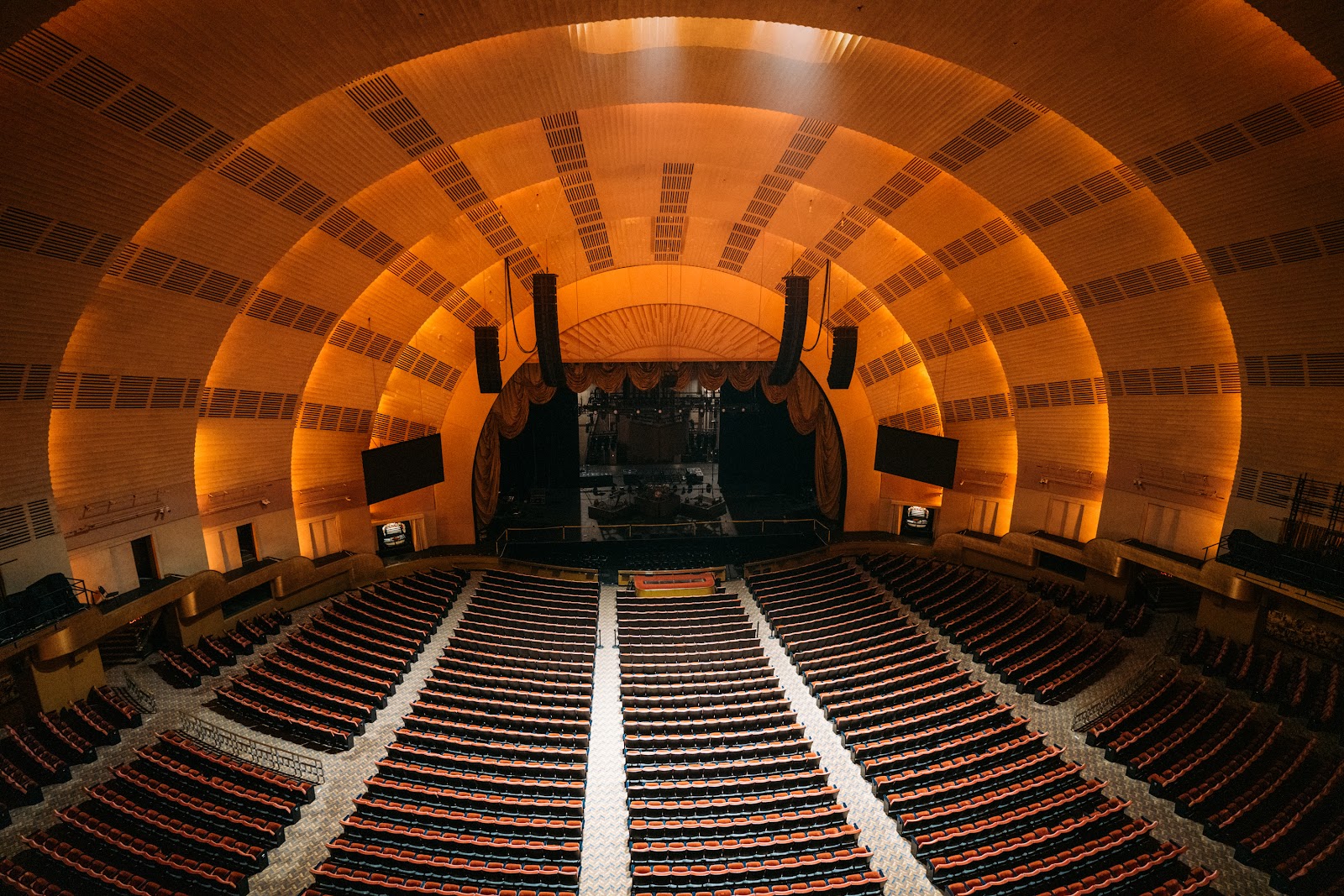
Radio City Music Hall (Source: Google Maps)
Opened in 1932, Radio City Music Hall is an iconic entertainment venue located in the Rockefeller Center complex. It was designed by architect Edward Durell Stone and features a stunning Art Deco style, characterized by its lavish interiors and grand auditorium. Known as the "Showplace of the Nation," it has hosted countless performances, including concerts, dance shows, and the famous Christmas Spectacular featuring the Rockettes. The venue's unique design includes a large proscenium arch and advanced acoustics, making it a favorite among performers and audiences alike. Radio City Music Hall is not only a cultural landmark but also a testament to the golden age of American theater, reflecting the artistic and architectural innovation of its time.
Rockefeller Center
A short walk from Times Square, Rockefeller Center is a famous complex known for its stunning Art Deco architecture and the seasonal ice-skating rink.
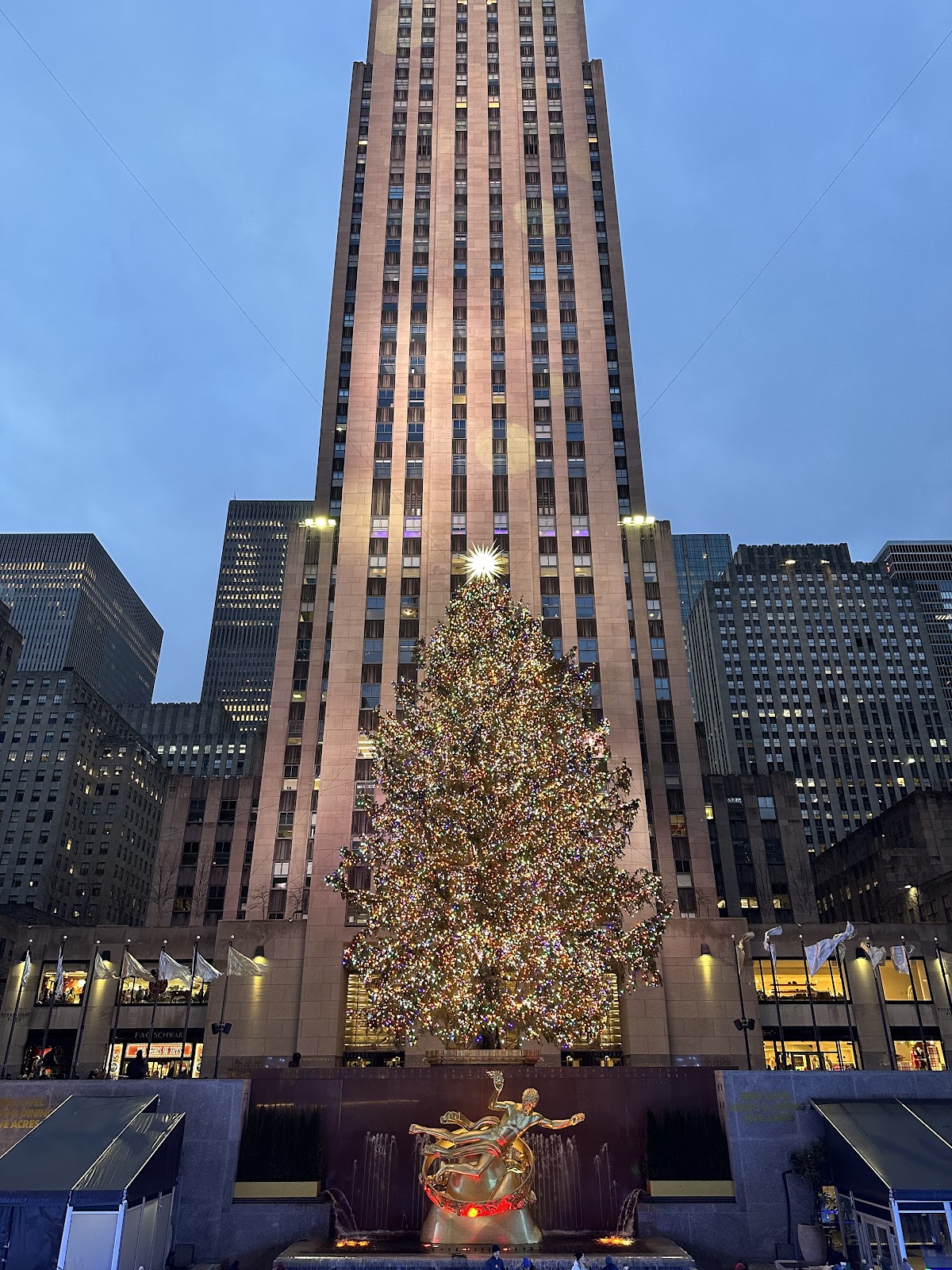
Rockefeller Center (Source: Google Maps)
Rockefeller Center is a sprawling complex in Midtown Manhattan, famous for its Art Deco architecture and cultural significance. Completed in the 1930s, it was developed by the Rockefeller family and has become a symbol of New York City's resilience during the Great Depression. The center features a range of attractions, including the iconic ice-skating rink and the towering Christmas tree during the holiday season. The architecture showcases intricate sculptures and murals, with notable buildings like 30 Rockefeller Plaza, which offers stunning views from its observation deck. Rockefeller Center has been a hub for entertainment, hosting live broadcasts of Saturday Night Live and the annual lighting of the Christmas tree. Its blend of art, culture, and history makes it a vital part of the New York experience.
St. Patrick's Cathedral
Just a few blocks from Rockefeller Center, this neo-Gothic cathedral is a beautiful architectural marvel and a serene escape from the city's hustle.
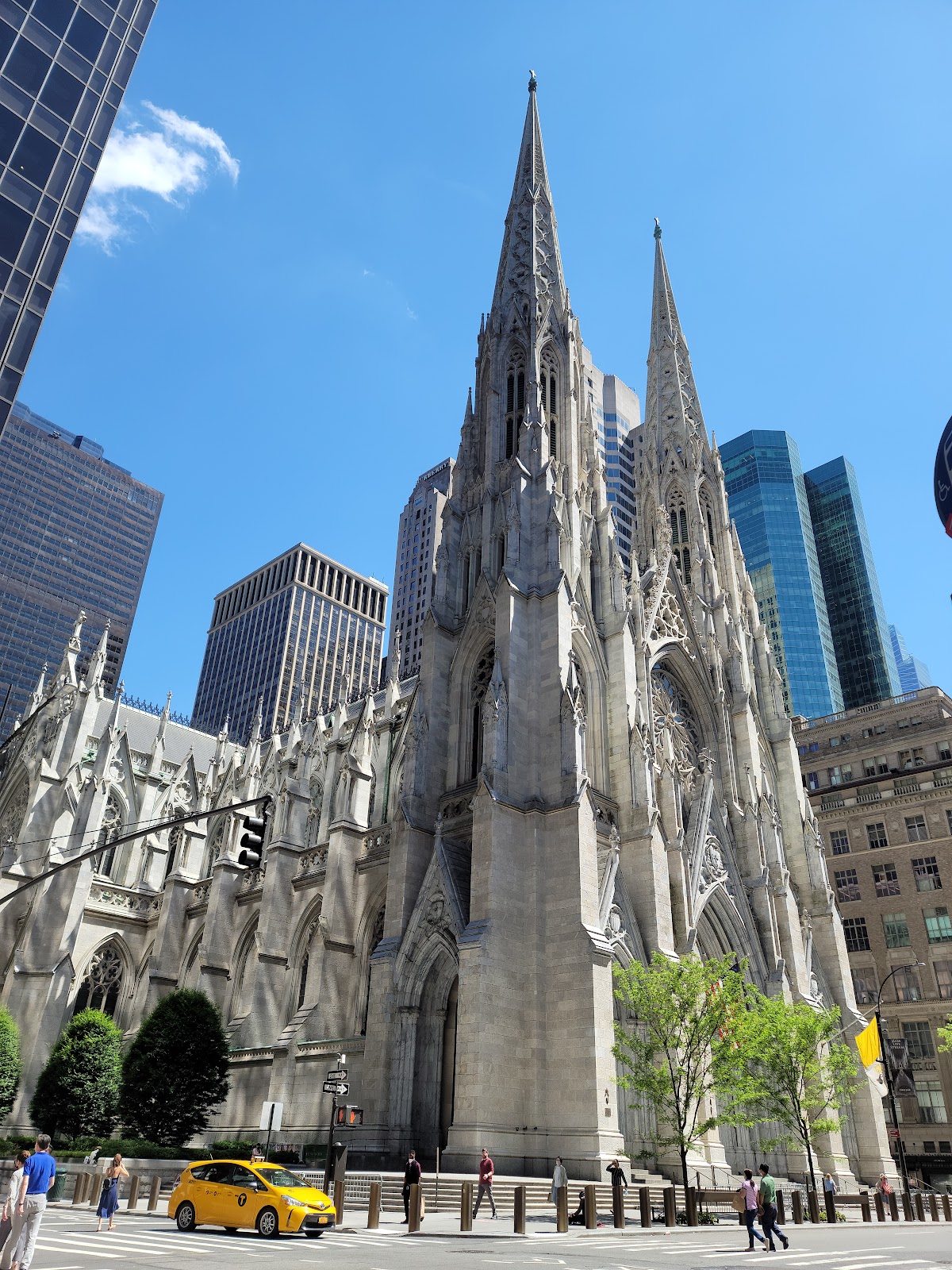
St. Patrick's Cathedral (Source: Google Maps)
St. Patrick's Cathedral is a magnificent neo-Gothic Roman Catholic cathedral located on Fifth Avenue in Manhattan. Completed in 1878, it is one of the largest cathedrals in the United States and serves as a prominent symbol of the Catholic Church in New York City. The cathedral features stunning stained glass windows, intricate sculptures, and a soaring nave that creates a sense of awe. Its design was influenced by European cathedrals, and it stands in striking contrast to the surrounding skyscrapers. St. Patrick's Cathedral has been the site of numerous significant events, including papal visits and major religious ceremonies. It offers a serene sanctuary for both worshippers and visitors, making it a beloved landmark in the midst of the city's hustle and bustle.
The Museum of Modern Art (MoMA)
A brief walk away, MoMA houses one of the most influential collections of modern art in the world, a must-see for art enthusiasts.
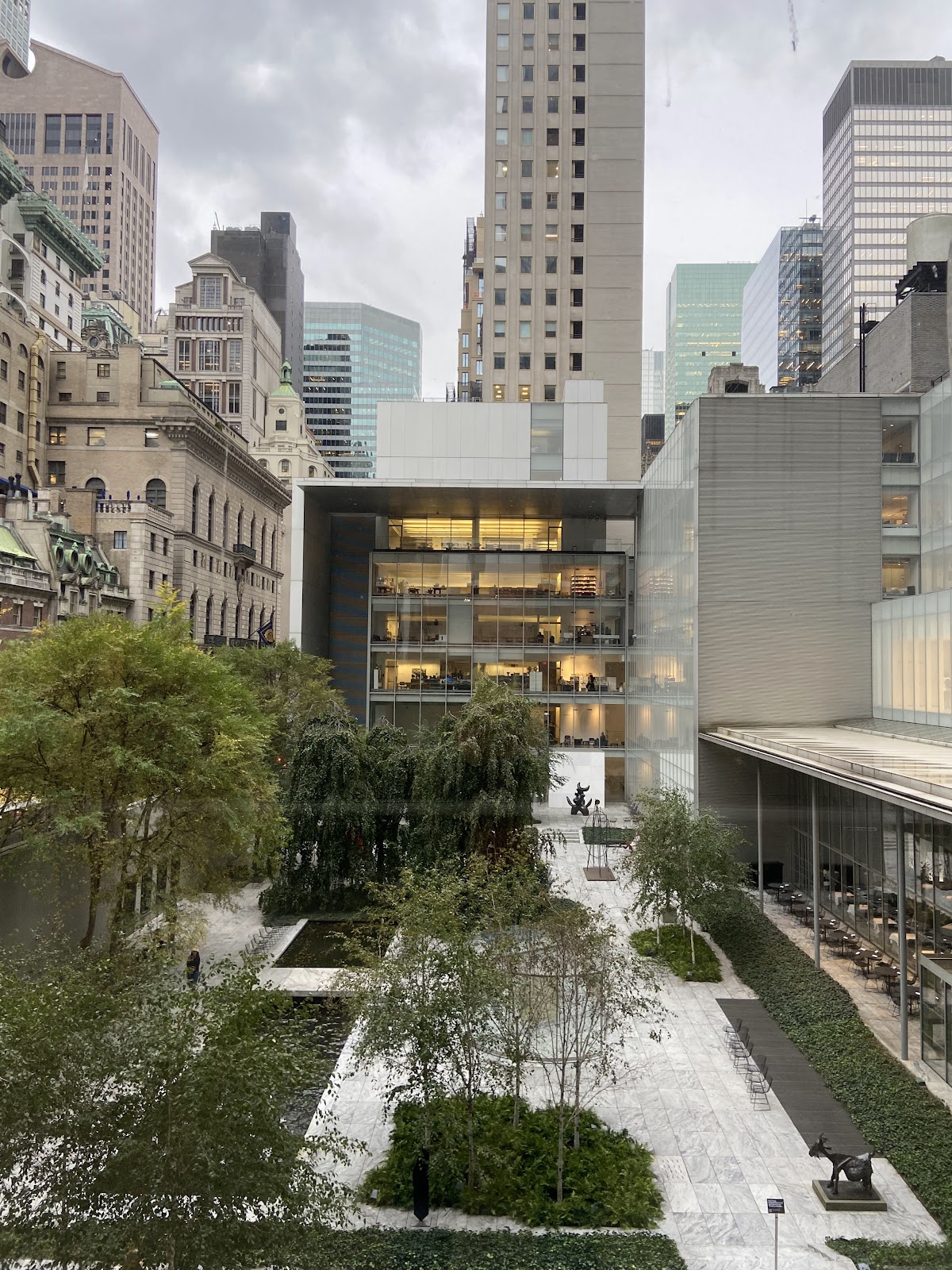
The Museum of Modern Art (MoMA) (Source: Google Maps)
The Museum of Modern Art, commonly known as MoMA, is one of the most influential modern art museums in the world, located in Midtown Manhattan. Founded in 1929, it houses an extensive collection of over 200,000 works of modern and contemporary art, including paintings, sculptures, photography, and design. Iconic pieces by artists such as Vincent van Gogh, Pablo Picasso, and Andy Warhol can be found within its walls. The museum's innovative exhibitions and educational programs have made it a leader in the art world, attracting millions of visitors each year. MoMA's architecture is equally impressive, with a design that encourages exploration and engagement with art. The museum serves as a cultural hub, fostering creativity and appreciation for modern art in New York City.
Central Park (South Entrance)
Enter Central Park from the south entrance to enjoy a refreshing stroll in one of the most famous urban parks in the world.
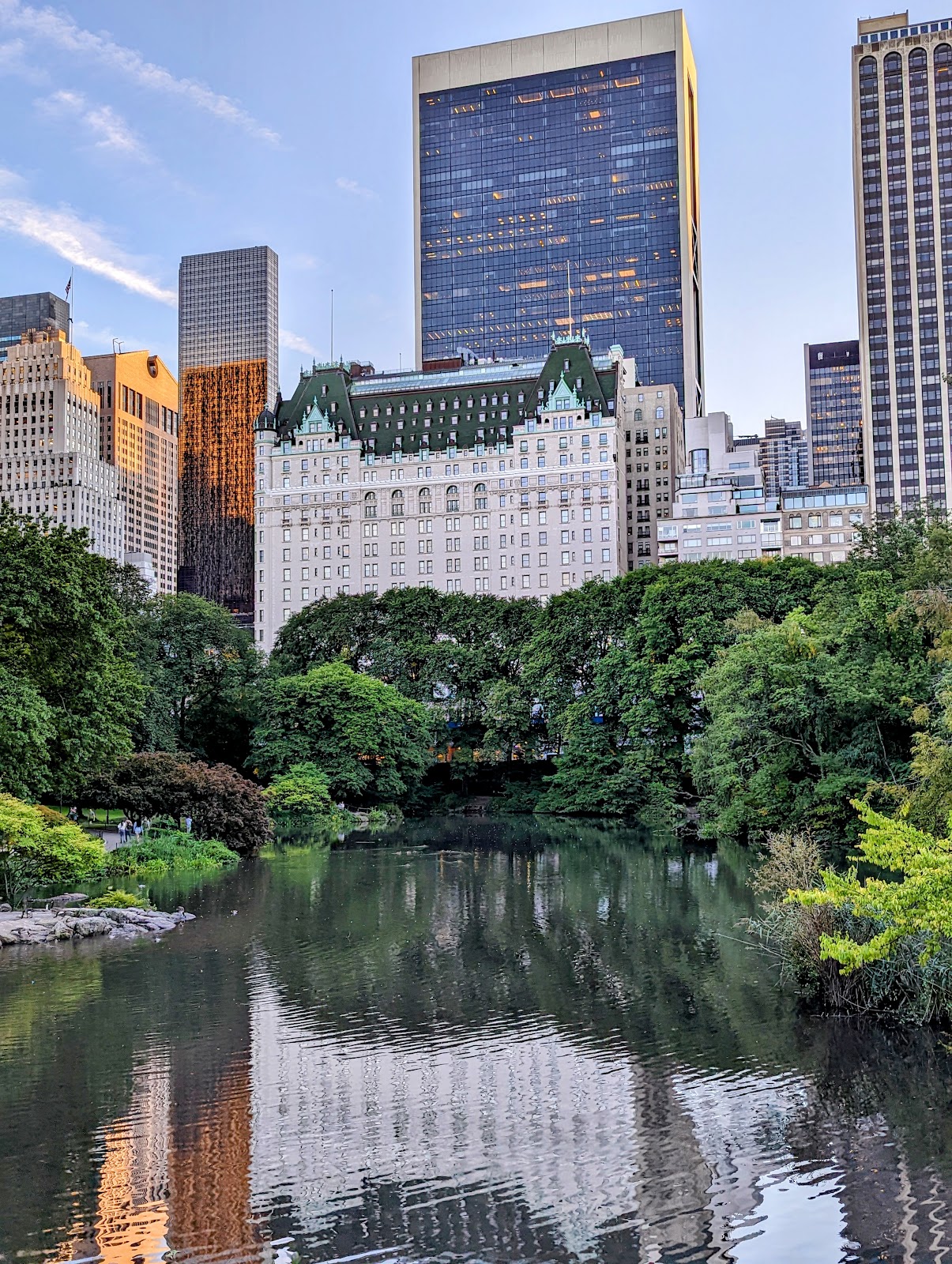
Central Park (South Entrance) (Source: Google Maps)
Central Park is a sprawling urban oasis in the heart of Manhattan, spanning 843 acres and offering a peaceful retreat from the city's hustle and bustle. Designed by Frederick Law Olmsted and Calvert Vaux in the 1850s, it was the first landscaped public park in the United States. The south entrance serves as a gateway to this iconic park, where visitors can enjoy picturesque pathways, lush lawns, and serene water bodies. Central Park is home to numerous attractions, including the Central Park Zoo, Bethesda Terrace, and various recreational facilities. The park's design incorporates natural landscapes, making it a haven for wildlife and a popular spot for picnics, jogging, and leisurely strolls. Its historical significance and cultural impact have made Central Park a cherished landmark and a symbol of New York City's commitment to green spaces.
Bethesda Terrace and Fountain
Located within Central Park, this architectural masterpiece offers breathtaking views and is a popular spot for both tourists and locals.
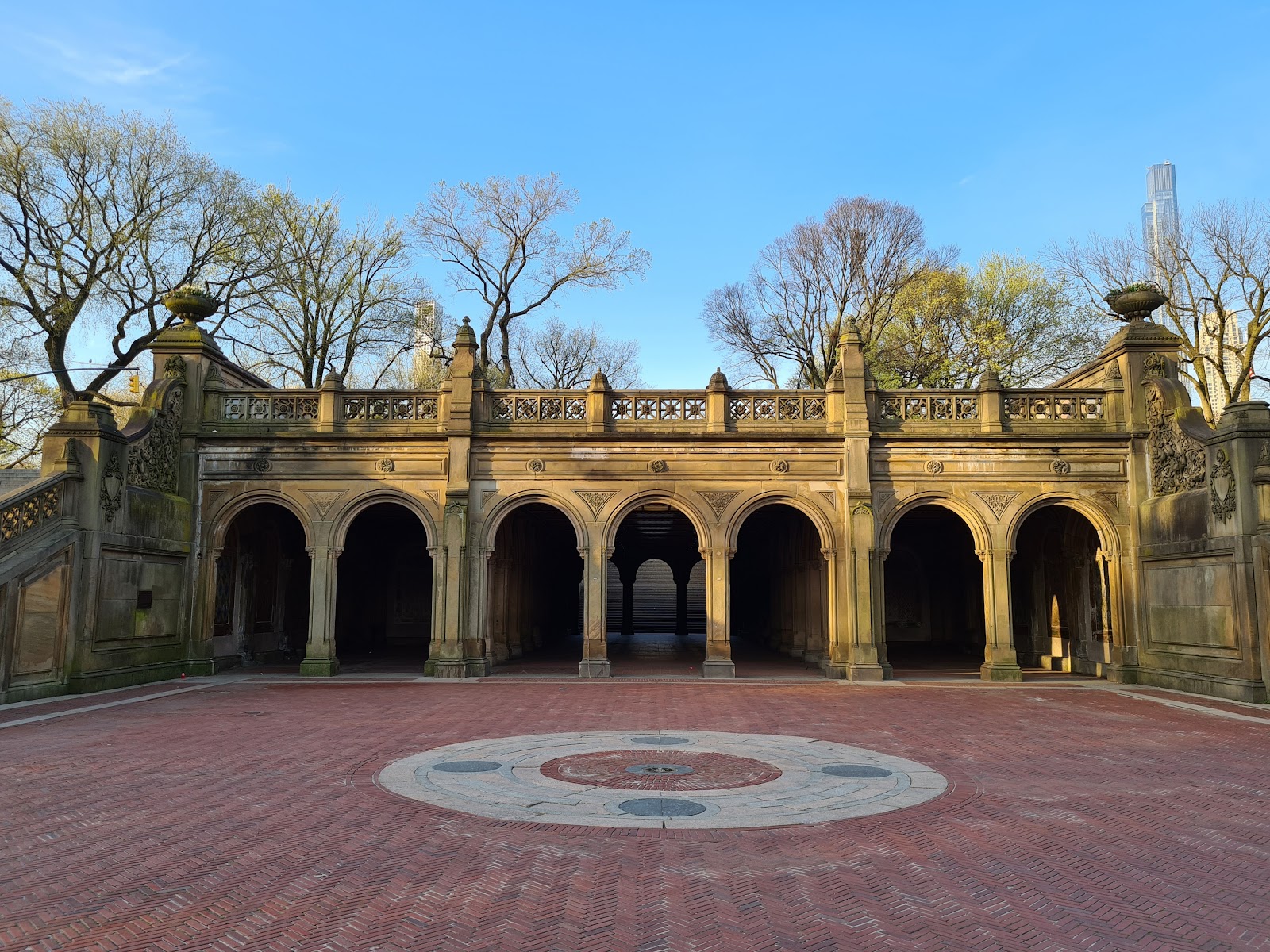
Bethesda Terrace and Fountain (Source: Google Maps)
Bethesda Terrace and Fountain, located within Central Park, is a stunning architectural feature that offers breathtaking views of the surrounding landscape. Designed in the mid-19th century, the terrace is a prime example of the Romantic style of landscape architecture, characterized by its intricate stonework and beautiful mosaics. The centerpiece of the terrace is the iconic Bethesda Fountain, which features an angel holding a lily, symbolizing healing. This location has been a gathering place for both tourists and locals, often serving as a backdrop for performances and events. The terrace provides access to the lower level of the park and offers views of the shimmering waters of the fountain, making it a popular spot for photography and relaxation. Its artistic design and cultural significance make it a must-see destination within Central Park.
The Metropolitan Museum of Art
Exiting Central Park, head to The Met, an iconic museum with an extensive collection spanning 5,000 years of art history.
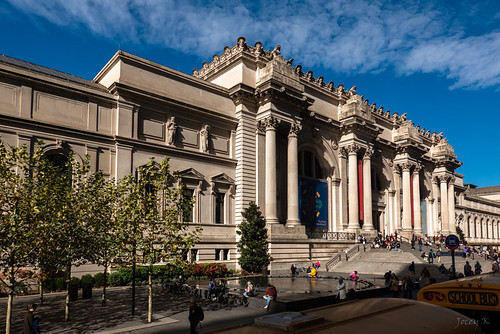
The Metropolitan Museum of Art (Source: Google Maps)
The Metropolitan Museum of Art, affectionately known as The Met, is one of the largest and most prestigious art museums in the world. Founded in 1870, it boasts a collection that spans over 5,000 years of art history, encompassing works from ancient civilizations to contemporary masterpieces. The Met's vast galleries house an array of art forms, including paintings, sculptures, textiles, and decorative arts from various cultures. Notable works include pieces by Rembrandt, Vermeer, and ancient Egyptian artifacts. The museum's architecture is equally impressive, featuring the iconic steps leading to its grand façade. The Met also offers a range of educational programs and exhibitions, making it a cultural hub for art enthusiasts. Its commitment to preserving and showcasing art makes it a vital part of New York City's cultural landscape.
The Solomon R. Guggenheim Museum
A short walk from The Met, this museum is renowned for its unique spiral architecture and impressive modern art collections.
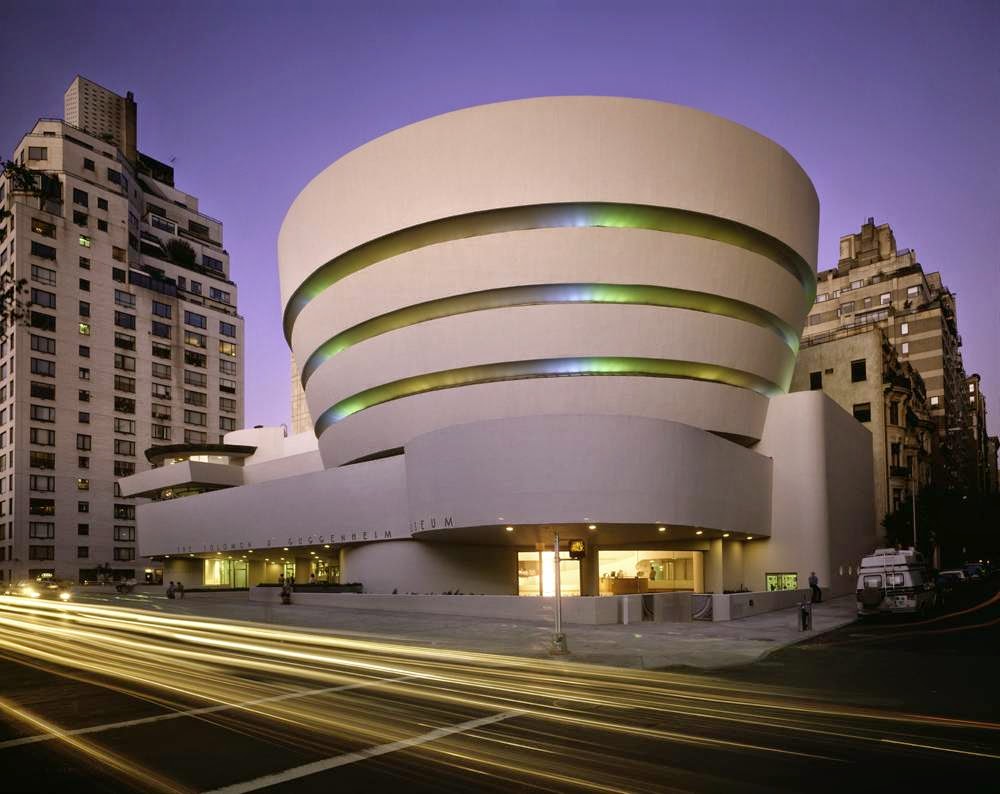
The Solomon R. Guggenheim Museum (Source: Google Maps)
The Solomon R. Guggenheim Museum, designed by the renowned architect Frank Lloyd Wright, is famous for its unique spiral structure and innovative design. Opened in 1959, the museum houses an impressive collection of modern and contemporary art, including works by artists such as Kandinsky, Picasso, and Pollock. The building itself is a work of art, with its distinctive spiraling ramp that allows visitors to experience the collection in a continuous flow. The museum's design reflects Wright's philosophy of organic architecture, creating a harmonious relationship between the structure and its surroundings. In addition to its permanent collection, the Guggenheim hosts temporary exhibitions that explore various themes in modern art. Its architectural significance and commitment to contemporary artistic expression make it a landmark in New York City's cultural scene.

Your travels, your rules.
Create your own Free Walking Tours.
Set your preferences, distances and anything you want to do or see.
Completely free, no payment required.